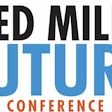New technologies provide nutritionists the ability to reduce the environmental impact of feed, animal production.
As companies strive to deliver on sustainability goals, nutritionists are tasked with finding the balance between ingredient inclusions, the animal’s needs and cost in their formulations.
BESTMIX Software’s senior sales manager Tami Smith joins the Chat to discuss how formulation software can be used to track and reduce feed’s environmental footprint while remaining profitable.
The role formulation software can play in reducing feed’s environmental footprint from WATT Global Media on Vimeo.
Transcription of Feed Strategy Chat with Tami Smith, senior sales manager, BESTMIX Software
Jackie Roembke, editor in chief, WATT Feed Brands/Feed Strategy: Hi, everyone. Welcome to Feed Strategy Chat. I’m your host, Jackie Roembke, editor in chief of WATT Feed Brands and Feed Strategy magazine.
This edition of Feed Strategy Chat is brought to you by WATT Global Media and FeedStrategy.com. FeedStrategy.com is your source for the latest news and leading-edge analysis of the global animal feed industry.
Today, we’re joined on Zoom by Tami Smith, senior sales manager with BESTMIX Software. She’s here to discuss how formulation can help impact and reduce the environmental impact of feed production. Hi, Tami, how are you today?
Tami Smith, senior sales manager, BESTMIX: Hi, I’m doing great. Thanks for having me today.
Roembke: Absolutely. Thank you so much for your time. OK, let’s get right into it. In your opinion, what are the main sustainability challenges feed producers face when trying to lower their environmental impact?
Smith: I think today it’s really boiling down to three key things. And that would be one is just flat out determining what the environmental impact is like, what numbers do you measure? How do you look at it? Where do the numbers come from?
And then secondly, it’s leveraging the ingredients with your sustainability goals while still remaining cost competitive. That’s pretty key. Because, after all, this is a business. It’s a business for the mill, and it’s a business for the producer so both sides have to be able to effectively make money in order to stay in business while still meeting the sustainability goals.
The third item would be aligning with the producer goals at the farm level. The feed mill may have their own goals in place for the business, but then our producers have yet another set of goals that they may have for their local community or the watershed that they live in, for example.
Roembke: Will you please describe the role feed formulation — or feed formulation software — can play in delivering on the sustainability pledges of downstream customers?
Smith: When we’re looking at feed formulation software, we really have to start with the basics and defining what that means. Really, it’s a twofold answer.
Traditionally speaking, where feed formulation software has been, what it is today and how it’s evolved to develop adequate nutritional content of a ration, as well as minimize the possible cost of that ration or, in other words, looking at maximum profit of that ration. Now, we’re taking these two factors — they remain important — and we’re adding a third dimension to that the environmental impact. This impact has been gaining much more importance as our industry needs answers to the environmental impact issue.
When we look at formulation, as a whole, it’s going to be providing context in which we can actualize sustainability initiatives for both the mill and in tandem with their customers. Through the use of the formulation software, a nutritionist can evaluate each feedstuff for its ability to align with environmental standards and individual farm goals — simplifying complex calculations and involving ingredient sourcing, utilization by the animal of those ingredients in the calculated ration in order to generate an animal protein such as meat or milk.
This is not just a simple carbon footprint type of an answer. It’s actually very involved and quite complex if you want to dive into it deeper. But for the purposes of today, I’m just going to try and keep it a little bit more simple.
Where it can involve multiple areas such as water usage, land usage, ozone depletion, for fossil fuel usage, eutrophication, acidification — and there’s even more than that. So I like doing that simplified version, especially as a nutritionist. If I was talking with a producer, sometimes getting all of these values can be weighing the conversation down so having one value is nice, but not necessarily talking about it in terms of a carbon footprint, but rather as a single score impact that can be measured in person years. Then we can say, ‘this ration has the effect of 1.04 person years,’ which makes it a little bit more relatable.
When we’re looking at these parameters, everything is really important to effectively manage a ration and also to ensure compliance with local regulations for specific land or watershed areas.
One example I’ll give is that I live in Pennsylvania and I’m in the Chesapeake Bay watershed. My husband has a dairy farm. And as part of our regular management practices, we are sampling our soil on our ground in multiple areas every year or so to make sure that we are in compliance. Some of the specific nutrients that we look at are nitrogen and phosphorus. A big part of that is because that’s the regulation part and that’s something that we can easily measure in that sample. Those nitrogen and phosphorus levels are of course affected by manure application in the soil, our no-till practices, and also by the ration that our cows consume.
When we start looking at that, that ration software can certainly have an effect on the watershed downstream. Compliance is essential for our daily practices as a dairy farm, but also as we look towards the future, because there’s an opportunity to do even more than what we do today, if we’re able to measure our inputs more concisely. This benefit can be actualized not just by our farm but also by the mill that we purchase our feed through. If the mill can realize and actually measure the results of these small ration changes and what that does for our environmental impact as a farm, then it can better help that feed mill with their corporate sustainability goals as well.
It really all comes back to being able to measure your inputs. If we can measure it, then we can evaluate progress in a practical way. Through feed formulation software, we can positively affect that either directly or indirectly, up to 80% of the overall environmental impact of protein production.
Today, we are able to measure the impact with our best next recipe management software, in combination with the Opteinics model from BASF. And we can evaluate a ration by the parameters that I mentioned before. In a short while, we’ll actually be able to optimize a ration based on the same environmental parameters.
So, for my Chesapeake Bay watershed example, what I mean is that I could set an upper limit on eutrophication with a kilograms of phosphorus equivalent or kilograms of nitrogen equivalent, or both, and optimize my ration with this parameter in addition to my traditional minimum and maximum levels for protein and energy and minerals, etc.
Today, we can already evaluate the ration with BESTMIX and Opteinics acts together, including a complete life cycle assessment evaluation so that a full picture is formed on the environmental impact of the production of animal protein.
Roembke: Very good, thank you so much for those examples, it really helps highlight what we’re talking about here today. With new technologies offering insights to nutritionists that they’ve never had before, how are they applying this ingredient data? How can it be used to reduce the environmental footprint of feed production, and then of course, in turn, animal production?
Smith: I think that a key area here is really looking at that last part I just mentioned, which is the life cycle assessment. That’s a powerful evaluation tool for both the producer and the nutritionist. This can allow for multiple rations across different life stages to come together into one picture, and then look at the environmental impact as a whole for that animal to go from birth through production, through protein production, and ending up at the slaughterhouse or the milk that is produced.
We can see a change in how sourcing for soybean meal, for example, can affect each ration along that life cycle chain and ultimately impact that entire life cycle analysis, then that can allow us either in feed as a nutritionist or as a producer, to evaluate the pros and cons associated with that choice. If that soybean meal was more expensive, but yet lowered our environmental impact, then maybe it’s worth that extra cost. It depends on what our goals are for both the mill as well as for that individual farm.
So when we’re looking at it, we just really have to keep in mind, does that particular item that I’m trying to evaluate for this life cycle assessment, does it have the impact that I’m looking for? And does it truly align with my goals as part of my farm or mill? That’s where I’m coming back to the whole life cycle analysis has the ability to really help us align so long as we can measure the inputs effectively.
Roembke: Very good. Well, thank you so much for that explanation. And these are great examples of formulation software in action. For more information on this and other new technologies, please subscribe to the Feed Mill of the Future digital supplement. You can find that subscription information at feedstrategy.com Thank you so much, Tami. And thanks to you for tuning in. Thank you.
Announcing the Feed Mill of the Future digital supplement
WATT’s feed brands Feed Strategy and Feed & Grain magazines join forces to launch the monthly Feed Mill of the Future digital supplement. Each edition aims to provide animal feed industry stakeholders with forward-looking content, market insights and a spotlight on the leading-edge technologies shaping the global feed industry of tomorrow.
Subscribe today! https://bit.ly/3dWzow7















